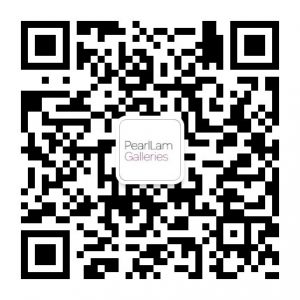20 March–21 June, 2023
HERE COMES THE SUN: A Solo Exhibition by Cynthia Polsky
Hong Kong
Overview
Hong Kong—Pearl Lam Galleries is pleased to present Here Comes the Sun, its first solo exhibition by New York-based artist Cynthia Polsky (b. 1939). On display is a selection of large-scale paintings and works on paper conceived between 1963–1974 that reflect the artist’s personal interest in the spirituality, aesthetics and traditions of Asia. With the rise of the conceptual art movement during Polsky’s active years as a painter, it is an interesting departure to look back at her time as a women artist who carved out her own creative direction that was outside of the dominant narratives of postwar American art of the time.
Cynthia Polsky was an active painter in the 1960s and 70s in New York, a time which is known for the prolific rise of abstract expressionism and colour field painting. Working independently from the art scene prevalent at the time, Polsky’s practice instead relied on her memories and lived experiences as sources of inspiration, most prominently the artist’s study of ballet and transformative travels to East and South Asia. This has resulted in a body of work that captures the nuances of an artist’s subconscious and imagination. The artist stated, “I feel these paintings of mine are going home. Somehow, they belong to Asia.”
The exhibition title Here Comes the Sun is borrowed from Polsky’s large-scale painting completed in 1974. It also reflects her interest in creative freedom, which is rooted in her knowledge of Eastern traditions and their respective views on universality which she experienced while travelling to Chennai, Sri Lanka, Japan, and beyond. The artist’s colour-saturated palette that invokes elusive, abstract forms is influenced by traditional Indian art, in particular 16th and 19th century Rajput and Mughal paintings, while vertically composed works like Chromatic Cascade I, II, IV are reminiscent of Chinese landscape ink paintings and Japanese calligraphy.
Vigorously trained in the choreographer George Balanchine’s contemporary ballet technique, Polsky approached movement in the body as a form of mediation which she applied to her painting technique. Often painting while listening to classical composers, Cynthia would apply acrylic paint onto a primed and unstretched canvas laid across the floor or surface that was propped up with building blocks in different sections to create an uneven surface. Working instinctively and at a brisk pace, using tools like small sponges or Chinese ink brushes, Polsky would then hang the work to allow the paint to drip downwards. Describing her work as lyrical expressionism, movement is depicted in statis or suspended in motion. She saw nature as a timeless subject and also explored landscapes in her paintings. Polsky also stated, “The forms one sees in nature, from the simplest to the most elaborate, were central to my imagination.” As a child, she remembers travelling on a cross-country train in America, looking at the interplay between nature and light.



